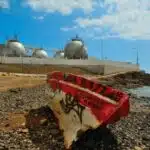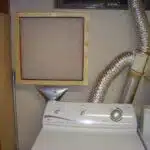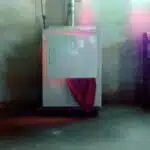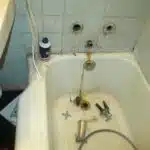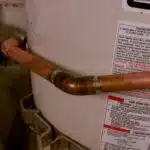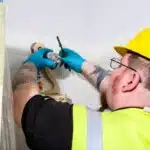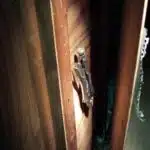As natural gas becomes an increasingly popular source of energy, it is important to recognize the potential hazards associated with its use. One of the most significant dangers that natural gas poses is the risk of a gas leak. A natural gas leak can have devastating consequences, including fires and explosions, which can lead to property damage or even loss of life. Therefore, it is essential to be able to identify common signs of a natural gas leak in order to take action quickly and prevent these catastrophic events from occurring.
Natural gas leaks are often caused by various factors such as poor installation, aging pipelines, or human error. Consequently, it is crucial for homeowners and business owners alike to know how to detect the warning signs of a gas leak. Natural gas safety experts recommend that individuals learn how to identify these signs and take immediate action if they suspect a leak. In this article, we will explore some of the most common signs that indicate a natural gas leak may be present in your home or workplace. By understanding these indications, you can help protect yourself and others from the dangers associated with natural gas leaks.
The Importance Of Natural Gas Safety
It is an ironic reality that natural gas, which powers our homes and businesses, can also pose a significant threat to our safety. This is why it is crucial to understand the importance of natural gas safety and be aware of the common signs of a potential leak. As a natural gas safety expert, I cannot stress enough how essential it is to prioritize your safety and the safety of those around you.
Natural gas leaks can occur due to various reasons, such as damaged pipelines or appliances, poor installation, or human error. These leaks can lead to severe consequences such as explosions, fires, and carbon monoxide poisoning. Therefore, awareness about natural gas safety should be at the forefront of every household’s mind.
It is imperative to take preventive measures by regularly maintaining your natural gas appliances and checking for warning signs such as a rotten egg smell or hissing sound. By being proactive and knowledgeable about natural gas safety, we can ensure our well-being and prevent any potential harm from arising. In the next section, we will discuss in detail the causes of natural gas leaks.
Causes Of Natural Gas Leaks
Faulty equipment is one of the most common causes of natural gas leaks. Faulty equipment can include faulty connections, valves, meters, and regulators. Poor installation of equipment can also result in natural gas leaks. Poor installation can include improper connections and loose fittings. Corrosion of equipment is another common cause of natural gas leaks. Corrosion can occur when the materials used in the equipment are not suitable for the environment or when the equipment is not properly maintained. In addition to corrosion, incorrect maintenance of equipment can also lead to natural gas leaks. It is important to ensure that all equipment is properly installed and maintained in order to avoid natural gas leaks.
Faulty Equipment
Faulty equipment is a common cause of natural gas leaks. It can occur in any part of the natural gas system, starting from the supply source to your home or business. The most effective way of preventing gas leaks due to faulty equipment is by identifying them early.
Preventing gas leaks from faulty equipment requires routine maintenance checks and prompt repairs of any identified problems. The inspection should include checking for loose connections, damaged pipes, and wear and tear on the appliances. Inadequate ventilation or blocked air vents can also cause faulty equipment leading to natural gas leaks.
Identifying faulty equipment is crucial in preventing gas leaks. Some signs that indicate there may be a problem with your natural gas system include hissing sounds near your gas lines or appliances, a strong smell of sulfur or rotten eggs, and dead vegetation around the area where the pipes are buried. If you notice any of these signs, it is essential to evacuate immediately and call emergency services. Remember that detecting an issue early can save lives and prevent significant damage to property.
As a natural gas safety expert, I cannot emphasize enough how crucial it is to prevent natural gas leaks caused by faulty equipment. Routine maintenance checks and prompt repairs are necessary for the safe operation of your natural gas system. Identifying warning signs such as hissing sounds, strong odors, and dead vegetation around pipelines are critical in preventing catastrophic events from occurring. By being proactive in maintaining your natural gas system’s safety, you can protect yourself, your family, and your community from harm caused by natural gas leaks.
Poor Installation
Another common cause of natural gas leaks is poor installation. This can occur during the installation of a new natural gas system or when upgrading an existing one. Poor installation can lead to gas leaks, which pose a significant risk to public safety and property. As a natural gas safety expert, I recommend that homeowners and businesses ensure that their natural gas systems are installed by qualified professionals who follow industry standards.
Proper maintenance is also essential in preventing gas leaks caused by poor installation. Regular checks should be conducted to ensure that all connections are secure, pipes are free from damage, and appliances are in good working condition. Inadequate ventilation or blocked air vents due to improper installation can also cause faulty equipment leading to natural gas leaks.
In conclusion, preventing natural gas leaks requires professional installation and proper maintenance of your natural gas system. Gas leaks caused by poor installation can be avoided by ensuring that only qualified professionals install your system while adhering to industry standards. Routine maintenance checks should be conducted regularly to identify any issues early and prevent catastrophic events from occurring. By being proactive in maintaining the safety of your natural gas system, you not only protect yourself and your family but also serve your community by reducing the risk of harm caused by natural gas leaks.
Corrosion
As a natural gas safety expert, I have seen how corrosion can cause natural gas leaks. Corrosion is the process by which metals deteriorate due to exposure to moisture and other environmental factors. When natural gas pipes corrode, they become weakened and more susceptible to leaks. This is especially true in areas with high humidity, saltwater exposure or acidic soil.
Corrosion prevention is key in avoiding natural gas leaks caused by this issue. One way to prevent corrosion is by coating the pipes with epoxy or another protective material. Proper installation of the pipes and fittings can also reduce the risk of corrosion. Additionally, detecting corrosion early through routine maintenance checks can help identify problem areas before they become a safety hazard.
It is important to note that even with proper corrosion prevention measures in place, it is impossible to completely eliminate the risk of natural gas leaks due to corrosion. However, taking proactive steps towards preventing and detecting corrosion early can greatly reduce the likelihood of an incident occurring. As a responsible member of your community, it is crucial to prioritize the safety of your natural gas system and take all necessary precautions to protect yourself and those around you from potential harm caused by natural gas leaks due to corrosion.
Smell Of Natural Gas
Identifying sources of natural gas leaks is crucial to preventing accidents and emergencies. Common causes of natural gas leaks include damaged pipes or fittings, faulty appliances, and human error such as digging into a gas line. It is important to be aware of these sources so that proper precautions can be taken to prevent dangerous situations.
In the event of a natural gas leak, emergency response is critical. Immediately evacuate the area and call 911 or your local gas company’s emergency line. Do not use any electronic devices or light switches, as they may create sparks that could ignite the gas. Wait for professionals to arrive and do not attempt to fix the problem yourself.
To help prevent natural gas leaks from occurring in the first place, it is recommended to have regular maintenance checks on your appliances and heating systems. Additionally, always ensure that you are using appliances that are properly vented and installed by qualified professionals. Being proactive in identifying potential sources of leaks can save lives and prevent dangerous accidents from happening.
If you hear hissing or whistling sounds coming from your gas line or appliances, this could indicate a natural gas leak. In the next section, we will discuss how to identify this particular sign of a leak and what steps should be taken immediately upon hearing these sounds to ensure safety for all involved.
Hissing Or Whistling Sounds
As a natural gas safety expert, I have seen numerous cases where hissing or whistling sounds serve as the initial signs of a gas leak. To understand this better, let me use an allegory. Imagine hearing the sound of air escaping from a tire that has a puncture; this is similar to the hissing or whistling sound you hear when there is a gas leak. The only difference is that instead of air, you are hearing natural gas escape.
If you hear any hissing or whistling sounds coming from your gas appliances or pipelines, it is essential to act immediately. Do not ignore these signs as they may indicate a dangerous situation that requires prompt Gas Leak Detection and Emergency Response. Remember that natural gas is flammable and can cause an explosion if left unattended.
The best course of action in such situations is to evacuate the premises immediately and call for emergency services. Do not try to investigate the source of the sound yourself as this puts you at risk of exposure to hazardous gases. Your safety should always come first, so be vigilant and proactive in identifying any potential signs of a gas leak.
As we move on to discussing dead or discolored vegetation, it is crucial to recognize that all these signs are interconnected and require our utmost attention. Any sign of danger must not be overlooked, and prompt action must be taken to prevent any hazardous incident from occurring.
Dead Or Discolored Vegetation
If you notice dead or discolored vegetation in your yard or around your property, it could be a sign of a natural gas leak. This type of vegetation damage is due to the environmental impact that natural gas has on plant life. When natural gas leaks into the soil, it can prevent roots from absorbing water and nutrients, which ultimately leads to plant death.
There are several types of vegetation damage that can indicate a natural gas leak. Some plants may turn yellow or brown, while others may wilt or die completely. Additionally, vegetation damage may occur in patches and be more severe in certain areas. If you notice any unusual changes in your yard or around your property, it’s important to contact a natural gas safety expert immediately.
If left untreated, a natural gas leak can have serious consequences not only for your property but also for the environment. In addition to causing vegetation damage, natural gas leaks can contribute to air pollution and greenhouse gas emissions. By taking swift action at the first sign of a problem, you can help protect yourself and the planet from these harmful effects.
A natural gas safety expert will be able to assess the situation and determine the best course of action for addressing any issues with vegetation damage or other environmental impacts. They may recommend measures such as soil testing or plant replacement programs to mitigate damage caused by a leak. It’s important to remember that taking steps to address a potential natural gas leak not only protects your own safety but also helps ensure a healthier planet for future generations.
As we move on to the next section on bubbles in standing water, it’s important to keep in mind that every sign of a potential natural gas leak should be taken seriously and addressed promptly by a qualified professional.
Bubbles In Standing Water
As the popular adage goes, “still waters run deep.” However, when it comes to natural gas pipelines, standing water that contains bubbles is a telltale sign of a problem. If you happen to notice such water on your property, it’s important to take immediate action. The bubbles are an indication of a gas leak and should never be ignored.
Gas leaks can occur for many reasons. One common cause is damage to the pipeline itself. Over time, pipes can become corroded or damaged due to exposure to the elements or other factors. When this happens, natural gas can escape and bubble up through any standing water in the area. This is why it’s essential to keep an eye out for bubbles in standing water near gas pipelines.
If you do happen to see bubbles in standing water near a gas pipeline, it’s critical that you contact a professional right away. Only trained experts should handle natural gas safety concerns as they require specialized knowledge and equipment. Remember that safety always comes first, so if you’re not sure what to do next or how to proceed safely, don’t hesitate to seek help from experienced professionals.
As you learn about natural gas safety concerns, it’s important also to watch out for fog or mist near gas lines. These signs could indicate further issues with your pipeline and pose additional risks that require prompt attention from qualified experts. Stay vigilant and focused on safety at all times when dealing with potential natural gas hazards!
Fog Or Mist Near Gas Line
Bubbles in standing water could be an indication of a gas leak, but there are other signs to look out for. Fog or mist near a gas line is another sign that shouldn’t be ignored. Gas leaks are dangerous and can lead to devastating consequences if not addressed promptly.
Gas line maintenance is crucial in preventing gas leaks. Regular inspections should be carried out, and any faulty or worn-out parts should be replaced. It’s also essential to avoid damage to the gas line during construction or landscaping projects. Any digging activity should be done carefully, especially around the gas line.
The hazards of gas leaks cannot be overstated. Exposure to natural gas can cause dizziness, fatigue, headaches, nausea, and even death in extreme cases. Immediate action must be taken when any signs of a gas leak are noticed. The safety of those around the area must always come first, and experts should be contacted immediately to assess and rectify the situation.
Moving on from fog or mist near a gas line, dizziness or fatigue is another sign of a possible gas leak that we will discuss next. It’s important to stay informed about all potential indicators of a gas leak to ensure safety at all times.
Dizziness Or Fatigue
Dizziness or fatigue are common symptoms that can occur when natural gas leaks into your home. These symptoms can be caused by several factors, including a lack of oxygen, the presence of carbon monoxide, or exposure to other toxic gases. If you experience dizziness or fatigue, it is important to leave your home immediately and seek medical attention.
There are several preventative measures you can take to reduce the risk of natural gas leaks causing dizziness or fatigue. One way is to ensure that all gas appliances in your home are installed and maintained by a licensed professional. Additionally, installing carbon monoxide detectors throughout your home can provide early warning signs of potential gas leaks.
It is crucial to recognize the early signs of a natural gas leak in order to prevent more serious health problems from occurring. In the next section, we will discuss another common symptom associated with natural gas leaks: headaches.
Headaches
Headaches are a common symptom of a natural gas leak. It is important to be aware of the signs of a natural gas leak and the symptoms of a headache in order to detect a potential issue. Common causes of headaches include stress, lack of sleep, dehydration, and exposure to environmental factors such as poor air quality or a natural gas leak. When a natural gas leak is suspected, it is important to pay attention to physical symptoms such as headaches, nausea, dizziness, and fatigue.
Causes Of Headaches
As natural gas safety experts, it is important to recognize the common signs of a natural gas leak in order to prevent potential hazards. One such sign is experiencing frequent headaches or migraines. Although headaches can be caused by various factors, long-term exposure to natural gas can have detrimental effects on one’s health and lead to chronic headaches.
The causes of migraines related to natural gas leaks are mainly due to the presence of chemicals such as sulfur dioxide and carbon monoxide, which are toxic and dangerous when inhaled in large quantities. These chemicals can irritate the nasal passages, throat, and lungs causing respiratory problems and triggering migraines. In addition, natural gas leaks also reduce oxygen levels in the air which limits blood flow to the brain leading to headaches.
Long-term exposure to these toxic gases can have devastating effects on one’s health. Some of these include chronic respiratory diseases, neurological disorders, and cardiovascular problems. The effects of long-term exposure may not be noticeable immediately but could significantly impact an individual’s overall health and wellbeing over time.
In conclusion, recognizing the signs of a natural gas leak such as frequent headaches or migraines is crucial for preventing potential hazards that could cause harm to individuals’ health and well-being. Therefore, it is important that individuals take necessary measures such as contacting a professional if they suspect a gas leak or installing detectors in their homes for early detection of leaks before they become harmful.
Symptoms Of Headaches
Headaches are one of the most common health problems that individuals experience. In many cases, headaches can be a result of natural gas leaks, which can lead to long-term health problems if left untreated. As natural gas safety experts, it is important to understand the different symptoms that individuals may experience if they have a headache caused by a gas leak.
The symptoms of headaches caused by natural gas leaks can vary depending on the severity of the exposure. Some common symptoms include dizziness, nausea, fatigue, and difficulty breathing. These symptoms can occur due to the presence of harmful chemicals such as carbon monoxide or sulfur dioxide in the air. If an individual experiences these symptoms along with a headache, it is crucial that they seek medical attention immediately.
There are several ways to prevent headaches caused by natural gas leaks. One way is to install detectors in your home that will alert you if there is a leak. Another way is to ensure proper ventilation in your home by opening windows and doors when necessary. It is also important to contact a professional immediately if you suspect a gas leak in your home. By taking these measures, individuals can prevent potential hazards and keep themselves safe from long-term health problems associated with natural gas leaks and headaches.
Nausea Or Vomiting
Headaches are a common symptom of natural gas exposure, as discussed in the previous section. However, other symptoms may also arise, including nausea or vomiting. These symptoms can be particularly troubling, as they indicate that the body is reacting to the presence of natural gas in a negative way. It is important for individuals to recognize these symptoms and take appropriate action to address them.
Symptoms and treatment of natural gas exposure can vary depending on the severity of the exposure. In some cases, individuals may experience only mild symptoms such as headaches or nausea. However, in more severe cases, long-term effects such as respiratory problems or neurological damage can occur. Treatment options for natural gas exposure include seeking fresh air immediately and contacting emergency services if necessary. Medical professionals may also recommend specific treatments depending on the severity of the individual’s symptoms.
It is crucial for individuals to understand that natural gas leaks can have significant long-term effects on their health if not addressed promptly. Long-term exposure to natural gas can lead to respiratory problems such as asthma or chronic bronchitis, as well as neurological damage that can affect memory and concentration. Additionally, prolonged exposure can increase an individual’s risk for certain types of cancer. Therefore, it is essential for individuals to take any signs of a natural gas leak seriously and seek professional help when needed.
Difficulty breathing is another common symptom associated with natural gas exposure that requires immediate attention. This symptom often indicates that there is a high concentration of natural gas present in the surrounding area and should not be ignored. In order to prevent severe health effects from occurring, it is important for individuals to act quickly when they notice any signs of a natural gas leak and seek professional help if necessary. Remembering these steps could save your life or those around you!
Difficulty Breathing
Difficulty breathing is one of the common symptoms observed in natural gas leaks. The inhalation of natural gas leads to a reduction in the amount of oxygen available for breathing. It can cause shortness of breath, chest pain, coughing, wheezing, and other respiratory problems. This condition can worsen quickly and lead to severe reactions such as unconsciousness or death.
Causes of difficulty breathing during natural gas leaks include inadequate ventilation systems in the buildings, cracks or holes in pipelines, and improper installation of appliances. Incomplete combustion by heating systems is another cause that results in the production of carbon monoxide and other hazardous gases that cause respiratory issues. Regular maintenance and inspection of natural gas appliances are essential to avoid these situations.
Treatment for difficulty breathing caused by natural gas leakage involves evacuating the area immediately and seeking medical attention promptly. Administering oxygen therapy is necessary to provide relief from respiratory distress. Long-term exposure to natural gas leakage may have detrimental effects like chronic obstructive pulmonary disease (COPD), lung cancer, or asthma. Therefore, it’s crucial to take preventive measures like installing detectors and maintaining proper ventilation systems regularly.
With difficulty breathing being a serious symptom associated with natural gas leaks, it’s vital to stay aware of its causes and treatment options. In the next section, we’ll discuss how flames or sparks can be hazardous when dealing with natural gas leaks.
Flames Or Sparks
Flames or sparks caused by natural gas leaks are one of the most dangerous hazards that can result from a gas leak. These flames and sparks can arise when there is an ignition source nearby, which may include anything from a light switch to an appliance. It is important to note that propane and natural gas have different properties and burning characteristics, so it is essential to use the right type of equipment for each fuel.
To prevent fire hazards arising from natural gas leaks, it’s essential to take some safety measures. The first step is to check for potential leaks in your home regularly. You can do this by using a natural gas detector or calling a professional who specializes in gas leak detection. Additionally, you should ensure proper ventilation in your home and avoid storing flammable materials near appliances that run on natural gas.
In the event of a natural gas leak, it’s crucial to act quickly and evacuate your home immediately. Once outside, avoid creating any sparks or flames, including smoking cigarettes or using electrical devices such as phones or switches. Call 911 or your local emergency number from a safe location and wait for help to arrive before re-entering your home. Remember that prevention is always better than cure when it comes to fire hazards due to natural gas leaks.
Carbon Monoxide Alarms
- Carbon monoxide (CO) is an odorless, colorless, and deadly gas that is produced from incomplete combustion of fuel sources such as natural gas.
- Carbon monoxide detectors are an essential safety device for households with gas appliances and should be installed in accordance with manufacturer’s instructions.
- Generally, CO detectors should be placed on each level of the home, preferably close to sleeping areas, and should be tested regularly to ensure proper operation.
- Carbon monoxide alarms are designed to detect levels of CO that are higher than the acceptable levels set by the Environmental Protection Agency (EPA).
Carbon Monoxide Detection
Carbon monoxide (CO) is a colorless, odorless gas that can be deadly if inhaled in high concentrations. It is produced when natural gas is not burned completely, and it can leak into your home without any warning signs. This makes it crucial for homeowners to have carbon monoxide alarms installed in their homes.
The installation process for carbon monoxide alarms is relatively simple. They can be plugged into an electrical outlet or hardwired directly into the electrical system of your home. It is important to install them near sleeping areas and on every level of your home, as carbon monoxide can rise and spread throughout the house quickly.
Maintenance tips include testing the alarm monthly to ensure that it is working properly, replacing the batteries at least once a year, and replacing the entire unit every five to seven years. Additionally, make sure to keep all vents and chimneys clear of debris to allow for proper ventilation of natural gas appliances.
By taking these precautions and being aware of common signs of a natural gas leak, such as a hissing sound or sulfur-like smell, you can help prevent carbon monoxide poisoning in your home. Remember to always take immediate action if you suspect a gas leak or if your carbon monoxide alarm goes off.
Carbon Monoxide Alarm Installation
Carbon monoxide alarms are essential in every home to ensure the safety of occupants. After purchasing a carbon monoxide alarm, the next step is to install it correctly. One crucial installation tip is to place the alarm near sleeping areas and on every level of your home. This placement ensures that every occupant will hear the alarm if it goes off, regardless of where they are in the house. Additionally, homeowners can choose to plug their alarms into an electrical outlet or hardwire them directly into the electrical system of their homes.
Proper maintenance practices ensure that carbon monoxide alarms work effectively over time. Homeowners should test their alarms monthly to ensure they are functioning correctly and replace batteries at least once a year. It’s also important to replace the entire unit every five to seven years, as recommended by manufacturers. Regularly cleaning vents and chimneys allows for proper ventilation of natural gas appliances, reducing the likelihood of a gas leak.
Carbon monoxide poisoning can be deadly if not prevented early enough, but with proper installation and maintenance practices, homeowners can prevent this disaster from happening. The installation process for carbon monoxide alarms is quite easy, but it’s vital to follow all necessary steps for maximum effectiveness. By doing so and taking quick action when necessary, homeowners can protect themselves and their loved ones from this dangerous gas.
What To Do If You Suspect A Gas Leak
Carbon monoxide alarms are essential for detecting the presence of CO gas in your home. However, it is important to note that they do not detect natural gas leaks. Gas leaks can happen at any time and can be extremely dangerous if not detected early. But how can you detect a gas leak?
Gas leak detection involves paying attention to common signs such as the smell of rotten eggs, hissing sounds coming from a gas appliance or pipeline, or dead plants or vegetation near pipelines. If you suspect a gas leak, it is crucial to take immediate action to prevent an emergency situation.
Gas leak emergency response requires quick thinking and action. The first thing you should do is evacuate the area and call 911 or your utility company’s emergency number from outside the building. Do not light matches or use any electrical switches or devices as they may trigger an explosion. Wait for professionals to arrive and follow their instructions carefully. Remember, prevention is always better than cure, so it is important to take steps towards preventing future gas leaks.
| Gas Leak Prevention Tips | Description |
|---|---|
| Regular Maintenance | Schedule professional maintenance of all gas appliances at least once a year |
| Inspect Pipelines | Check pipelines regularly for any signs of wear and tear or damage |
| Install Gas Detectors | Consider installing natural gas detectors in your home as an additional safety measure |
| Proper Ventilation | Ensure proper ventilation in all rooms where gas appliances are used |
By following these measures, you can minimize the risk of a natural gas leak in your home. It is important to educate yourself on what to do in case of an emergency and take necessary precautions towards preventing potential hazards in the future.
Preventing Gas Leaks In The Future
Gas leak prevention tips are essential to ensure the safety of your home and loved ones. Identifying gas leak risks is the first step in preventing future leaks from occurring. Here are some gas leak prevention tips that you can follow to minimize the risk of a gas leak happening in your home.
Regular maintenance checks – Schedule regular checks with a licensed professional to ensure that all gas appliances, connections, and pipes are in good condition.
Proper installation – Ensure that all gas appliances are installed by licensed professionals who are trained to handle natural gas safely.
Avoid DIY projects – Do not attempt to install or repair any natural gas appliances yourself. Seek help from a qualified professional instead.
Be alert for warning signs – Familiarize yourself with the common signs of a natural gas leak, such as hissing sounds, foul odors, and dead vegetation around pipelines.
By following these simple steps, you can significantly reduce the risk of a natural gas leak occurring in your home. Always remember that safety comes first and never hesitate to seek help from professionals if you suspect a potential risk or need assistance in maintaining your gas appliances.
Conclusion
Natural gas is a valuable resource that provides energy to millions of homes and businesses. However, it can also be dangerous if proper safety measures are not taken. It is important to be aware of the common signs of a natural gas leak in order to prevent potential hazards.
The smell of natural gas is the most obvious sign of a leak. If you detect this odor, evacuate the area immediately and contact your gas company or emergency services. Other signs include hissing or whistling sounds near gas lines, dead or discolored vegetation in areas near pipelines, and flames or sparks from appliances.
According to the National Fire Protection Association, there were an estimated 66,400 reported incidents involving natural gas leaks in the United States between 2009-2013. These incidents resulted in 233 deaths, 785 injuries, and $2.5 billion in property damage. It is crucial that individuals take steps to prevent gas leaks by properly maintaining their appliances and installing carbon monoxide alarms.
In conclusion, as a natural gas safety expert it is essential to educate individuals on the common signs of a natural gas leak and how to prevent them. The risks associated with a gas leak can have devastating consequences on both human life and property. By being vigilant and taking preventative measures, we can ensure that our communities remain safe from these potential hazards.
Image Credits
- “Natural Gas Leak Forces Hollywood Evacuations” by LAFD (featured)




